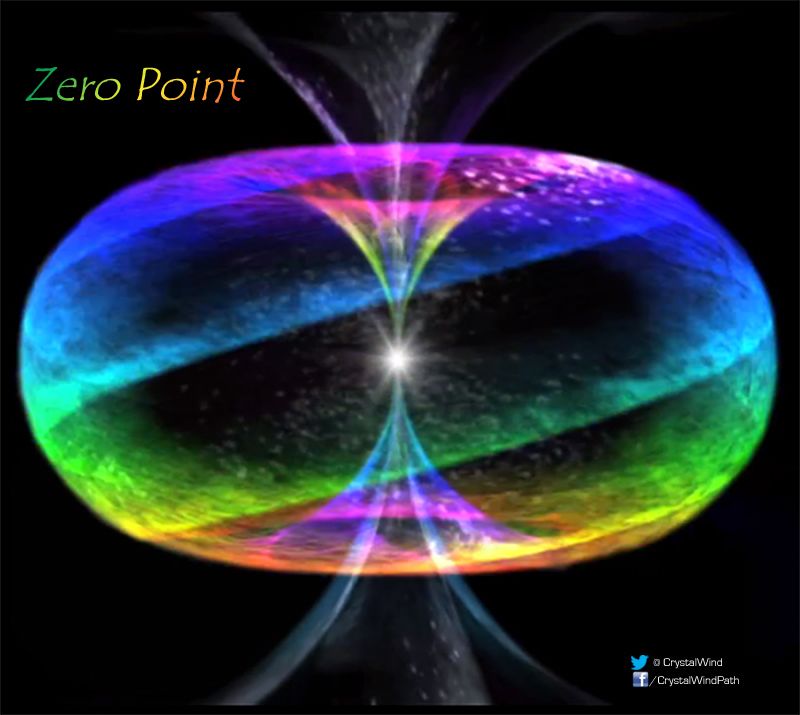©2008-2025 CrystalWind.ca. All rights reserved.
No reproduction without written permission.
Crystal Wind wisdom since 2008—Awaken Your Soul!
#CrystalWind #SpiritualJourney #Awakening #Enlightenment
Zero Point Energy

Zero-point energy, also called quantum vacuum zero-point energy, is the lowest possible energy that a quantum mechanical physical system may have; it is the energy of its ground state. All quantum mechanical systems undergo fluctuations even in their ground state and have an associated zero-point energy, a consequence of their wave-like nature. The uncertainty principle requires every physical system to have a zero-point energy greater than the minimum of its classical potential well. This results in motion even at absolute zero. For example, liquid helium does not freeze under atmospheric pressure at any temperature because of its zero-point energy.
Quantum mechanics predicts the existence of what are usually called ''zero-point'' energies for the strong, the weak and the electromagnetic interactions, where ''zero-point'' refers to the energy of the system at temperature T=0, or the lowest quantized energy level of a quantum mechanical system. Although the term ''zero-point energy'' applies to all three of these interactions in nature, customarily (and hereafter in this article) it is used in reference only to the electromagnetic case.
In conventional quantum physics, the origin of zero-point energy is the Heisenberg uncertainty principle, which states that, for a moving particle such as an electron, the more precisely one measures the position, the less exact the best possible measurement of its momentum (mass times velocity), and vice versa. The least possible uncertainty of position times momentum is specified by Planck's constant, h. A parallel uncertainty exists between measurements involving time and energy (and other so-called conjugate variables in quantum mechanics). This minimum uncertainty is not due to any correctable flaws in measurement, but rather reflects an intrinsic quantum fuzziness in the very nature of energy and matter springing from the wave nature of the various quantum fields. This leads to the concept of zero-point energy.
Zero-point energy is the energy that remains when all other energy is removed from a system. This behaviour is demonstrated by, for example, liquid helium. As the temperature is lowered to absolute zero, helium remains a liquid, rather than freezing to a solid, owing to the irremovable zero-point energy of its atomic motions. (Increasing the pressure to 25 atmospheres will cause helium to freeze.)
Imagine a world of inspiration and healing, free for all—made possible by YOU!
Donate Now—Ignite the Magic at CrystalWind.ca!

Epilepsy - Finding A Cure
Your donation can make a difference!
Help us find a cure – donate now!
Unlock Your Light: Join Lightworkers Worldwide on CrystalWind.ca!
Follow Us!
ॐ Namasté - Blessings!
send out comes back."
© 2008-2024 crystalwind.ca. All rights reserved.
Featured This Month
Sun in Cancer
Cancer Sun Sign Characteristics Overview The name "Cancer" comes from Latin, ... Read more
Chalcedony
The Stone Of Orators Chalcedony was very popular as a decorative stone in ant... Read more
Egyptian Zodiac/Astrology
Egyptian astrology was one of the earliest forms of astrology. The Egyptians w... Read more
Cancer Mythology
The Mythology of Cancer: A Celestial Tale of Loyalty and Sacrifice Among th... Read more
Lugh - Celtic God Of The Sun
The god Lugh was worshiped in Ireland as a deity of the sun. This connection... Read more
Lammas by The Hedgewitch
Although in the heat of a Mid-western summer it might be difficult to discer... Read more
Abalone Shell
Echos Of The Ancestors Abalone strengthens the structure of the body and th... Read more

































